Speaking of Mito, Ibaraki Prefecture, in addition to "Kairakuen", which is one of the Three Great Gardens of Japan, many people would think about the story of "Mito Komon" (水戸黄門). "Mito Komon", a highly renowned person in Japan, is "Tokugawa Mitsukuni" (徳川光圀), the second feudal lord of the Mito domain in the Edo period (the name "Mito Komon" is comes after the position of Chunagon (中納言 also known as "Komonjiro" 黄門侍郎).
However, even though he was a member of the Three TokugawaNoble Families (徳川御三家, Tokugawa Gosanke), Mito Castle, the residence of the Mito Domain, is quite different from the other two families. This time, the FUN! JAPAN editorial department will introduce Mito Castle in detail.
"Mito Tokugawa family", one of the Three Tokugawa Families
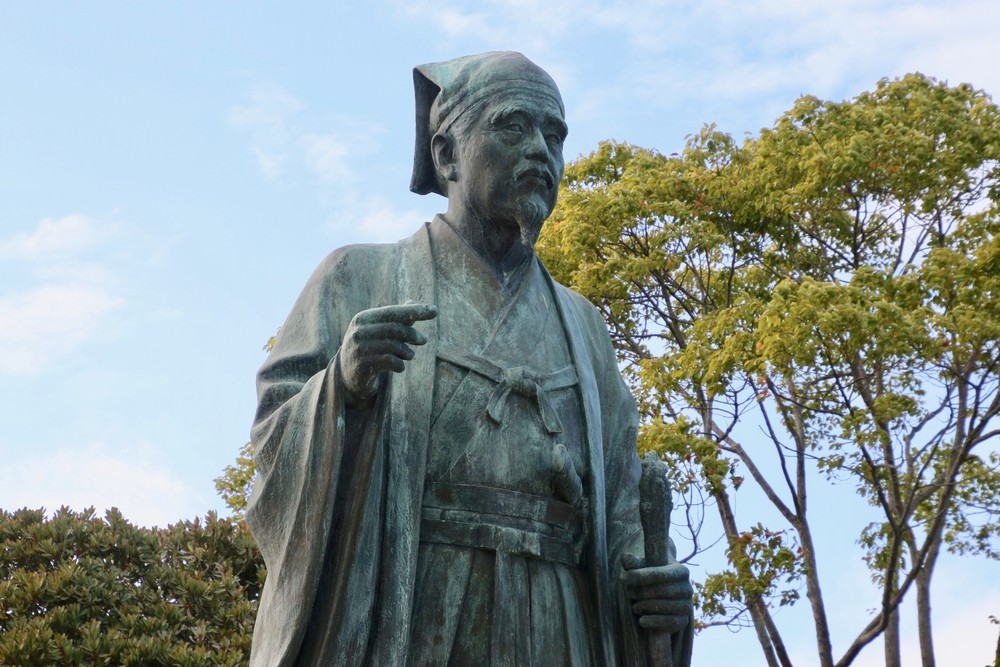
The Tokugawa Gosanke refers to the three families of "Owari Tokugawa Family (Aichi Prefecture)", "Kishu Tokugawa Family (Wakayama Prefecture)" and "Mito Tokugawa Family". The Gosanke (御三家 - three noble families) are daimyos who have a close relationship with the Tokugawa Shogunate, and the first three Gosanke families designated by Ieyasu Tokugawa are the Tokugawa main family, the Owari Tokugawa family, and the Kishu Tokugawa family. In addition, the shogun who succeeds the Tokugawa Shogunate has always been nominated by these three families.
At that time, the ranking of Mito Tokugawa family was lower than the Owari-Tokugawa and Kishu Tokugawa, but for many years they served as a general aide in Edo (modern Tokyo) and were involved in general affairs, so they are called "Fuku Shogun" (副将軍 - vice shogun or deputy general). After the death of Ieyasu, the Mito Tokugawa joined the three Gosanke families.
On the other hand, it was said that Ieyasu Tokugawa left a will that "the Mito Tokugawa family should never be a successor" according to rumors, but it is unfounded - as you all know, "Tokugawa Yoshinobu" (徳川慶喜), the last shogun of the Edo Shogunate, was from the Mito Tokugawa family.
"Mito Castle", one of the largest earthen castles in Japan
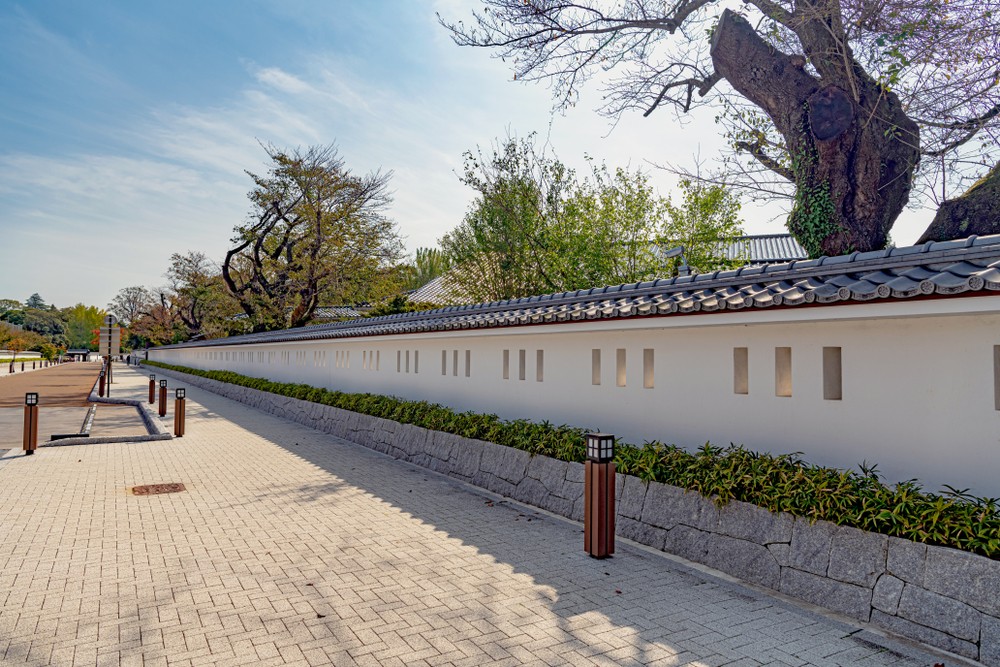
When you visit Mito Castle, you may be wondering why the castle itself is so inconspicuous even though it was called the Gosanke.
Mito Castle is a Hirayama castle (平山城 - castle built on relatively flatland instead of on high hill or mountain) located on a plateau between the Naka River and Lake Senba, and was built from the end of the Heian period (794 -1184) to the beginning of the Kamakura period (1185 - 1333). Its history was longer than Owari Tokugawa's Nagoya Castle and Kishu Tokugawa's Wakayama Castle. Originally built by Baba Sukemoto (馬場資幹), it was later controlled by Satake family (佐竹氏), then sealed by "Tokugawa Yorifusa" (徳川頼房), the first feudal lord of Mito, in the Edo period and at the same time, became the residence of the Mito Domain.
Yorifusa, who succeeded this castle, improved and expanded the Sannomaru (third enclosure) and Sotobori (outer moats), built a palace in Ninomaru (second enclosure), and built a Yagura (turret) called the Sankai Monomi Yagura (三階物見櫓 - three floors watch tower), but compared to Nagoya Castle and Wakayama Castle, which have a Tenshu (天守 - castle tower), it may seem much inferior. The reason is that while lacking of fine stone walls, Mito Castle protects the castle with embankments (earthworks) and ditches (moats) with large embankments instead. Also, the Mito feudal lord has been in Edo for a long time, and since he rarely returned to Mito's castle, the interior of the castle is rather simple.
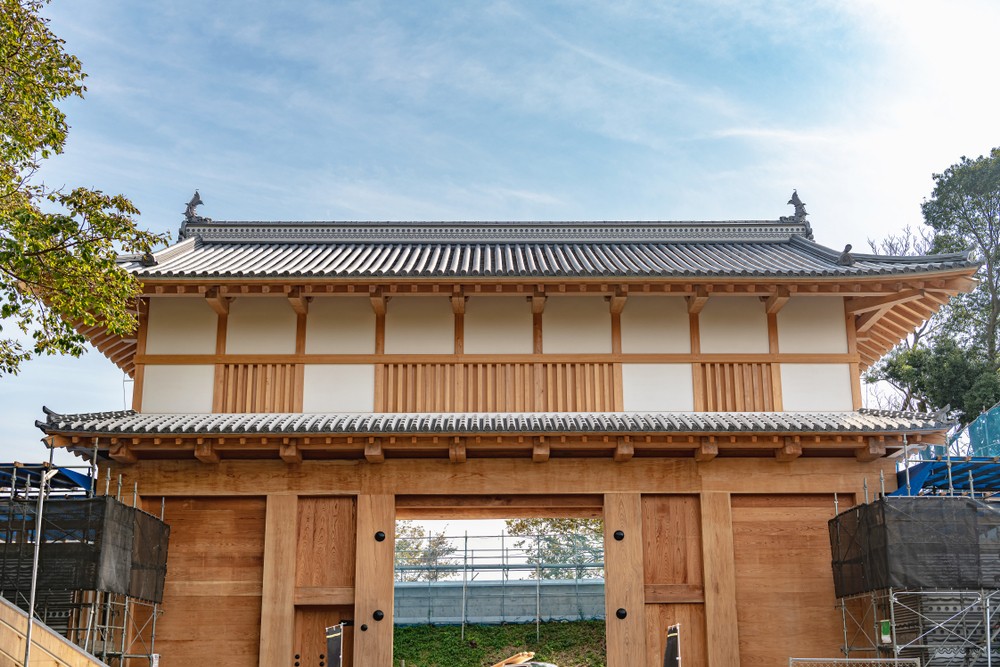
Mito Castle was selected as one of the "Japan's Top 100 Castles" in 2006. Now, while taking a walk in Mito City, you can still see the embankment (earthworks) and ditches (moats), but most of the large buildings were burned down in World War II. The oldest surviving building, "Yakuimon" (薬医門), was built during the Satake family era (1590 - 1602) and has been designated as a Cultural Property by Ibaraki Prefecture. In 1981, it was relocated and restored on the site of Mito First High School, which was the site of the former Mito Castle Honmaru (main enclosure). After that, with the restored Ninomaru Sumiyagura (二の丸角櫓 - corner turret of second enclosure) and Otemon (大手門 - main gate), you can see the resemblance of its former appearance.
Tourist Information
- Spot name: Mito Castle Ruins (水戸城跡) (Ninomaru Exhibition Hall)
- Address: 2-9-22 Sannomaru, Mito City, Ibaraki Prefecture
- Access: Approximately 10 minutes on foot from the north exit of JR Mito Station
- Business hours: 09:00 to 16:00
- Closed: December 29th - January 3rd
"Kodokan", an academic hall of fame surrounded by plum blossoms

Not just the Yakuimon, the "Kodokan" (弘道館) is another small building that survived the war. The construction of "Kodokan" was completed in 1841 in Sannomaru, Mito Castle, and the main building was opened in 1857. It was the largest feudal domain school in Japan at that time, created by "Tokugawa Nariaki" (徳川斉昭), the ninth feudal lord of the Mito Domain called "Retsu-ko" (烈公). Despite the fact that the Mito Domain did not have financial surplus at that time, it built a large-scale clan school. Nariaki's strong determination to raise the education level of the feudal retainers cann be seen.
The entrance age of Kodokan is from 15 to 40 years old, but one can study here for the rest of your life without any graduation requirements. At Kodokan, which had become a place for both letters and arms, they taught not only academics such as Confucianism, etiquette, astronomy, mathematics, and waka poetry, but also arts of war such as kendo, military art, matchlocks, and equestrian as well. In addition, a medical center for studying medicine was also opened. "Tokugawa Yoshinobu," the last shogun of the Edo Shogunate, also received a gifted education here.

The buildings of the main office, the Shizendo hall (至善堂), and the main gate of the Kodokan were designated as nationally designated Important Cultural Properties. In 2015, they became a Japanese Heritage, certified as "Educational Heritage from Early-Modern Japan - The Origins of Academics and Decorum" (近世日本の教育遺産群―学ぶ心・礼節の本源).
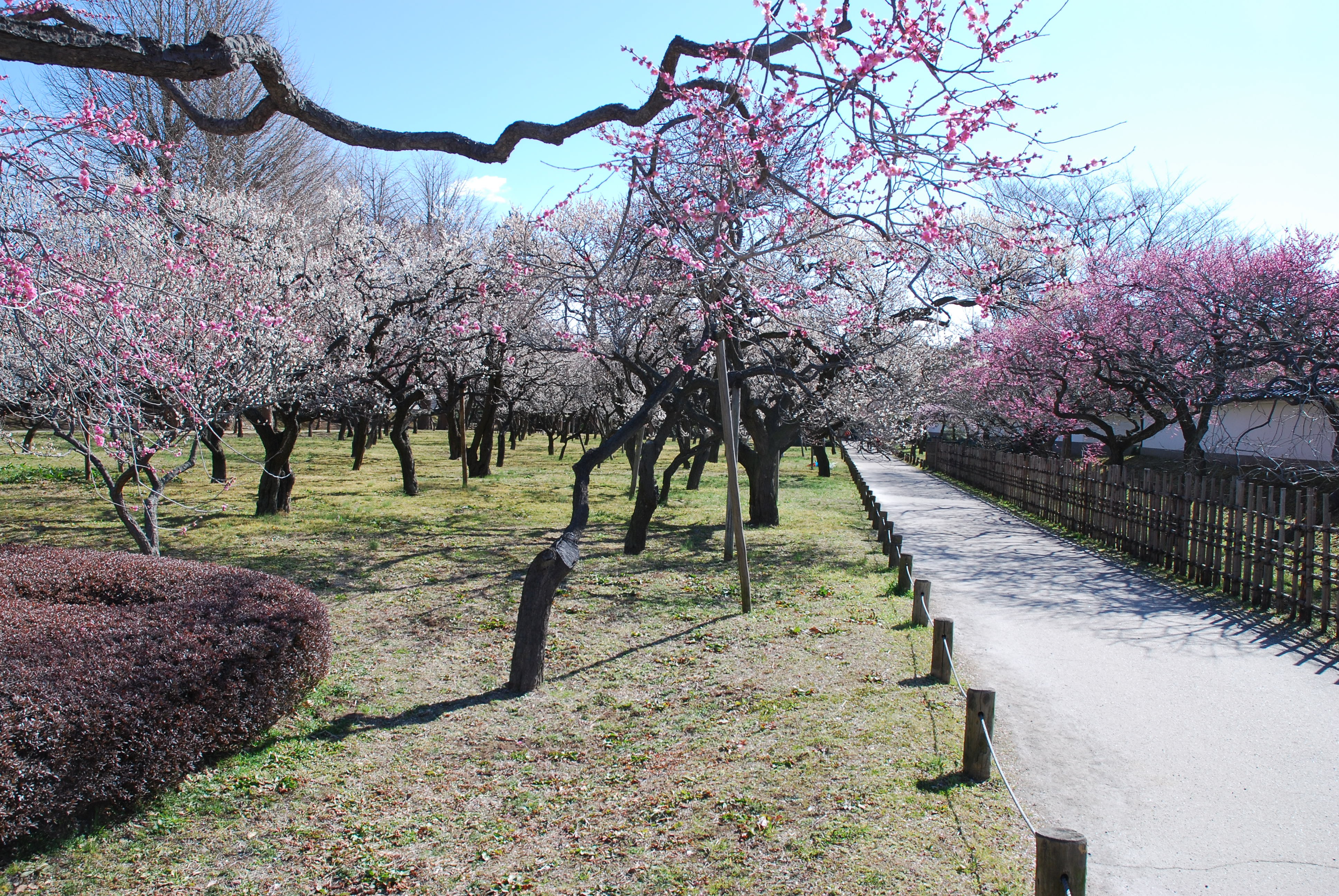
Not only as an academic hall of fame, Kodokan is also known as a famous place at which about 800 plum blossoms bloom on the premises during sprinh.
The area around Mito Castle Ruins is now a academic zone. Mito First High School in the site of the Honmaru site, Mito Third High School in the site of the Ninomaru site, and elementary schools and kindergartens attached to the Faculty of Education of Ibaraki University are gathered around this area. If 'Retsu-ko' who opened Kodokan get to see the modern Mito Castle, he will surely be impressed.
Tourist Information
- Spot name: Kodokan (弘道館)
- Address: 1-6-29 Sannomaru, Mito City, Ibaraki Prefecture
- Access: Approximately 8 minutes on foot from the north exit of JR Mito Station
- Opening hours: February 20th - September 30th 09:00-17:00
October 1st - February 19th 09:00-16:30 - Closed: December 29th - January 3rd
- Admission fee: 400 yen for adults, 200 yen for children, 200 yen for 70 years old and above
Kairakuen is also a must-visit!
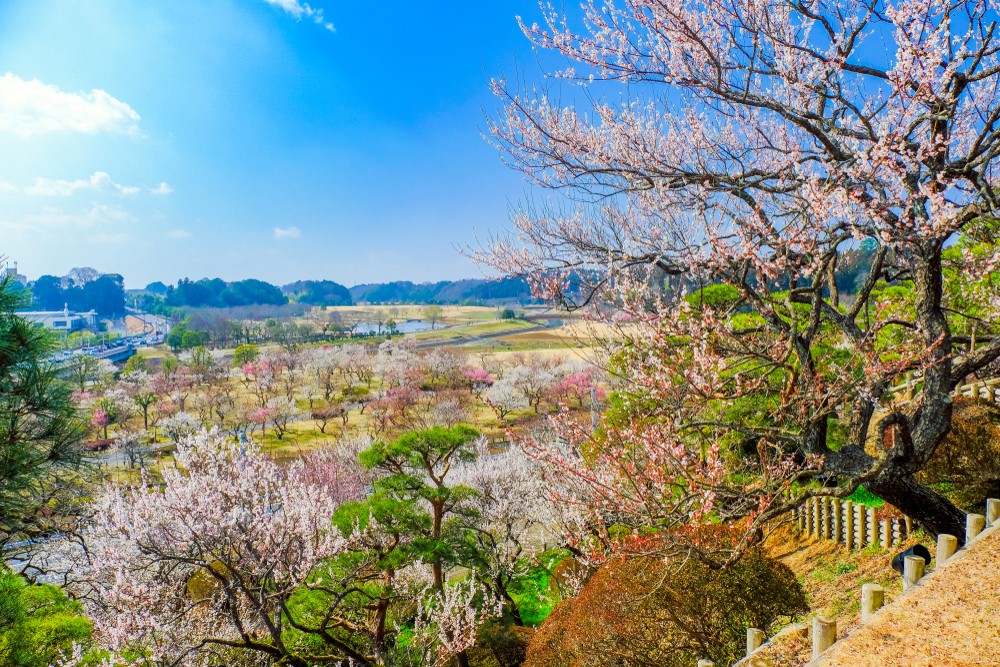
In addition to the feudal domain school, Retsu-ko also built "Kairakuen" (偕楽園), one of the Three Great Gardens of Japan. Nariaki, who claimed the principal of "Itchou Isshi" (一張一弛 - tension and relaxation), saw that while education is important, but so is a proper break. If "Chou" (張) of "Itchou Isshi" is "Kodokan" which became a place of learning, then "Shi" (弛) is Kairakuen which became a place of rest.
Kairakuen, which has a vast site and is planted with 3,000 plum trees, is one of Japan's leading plum blossom spots. At the "Mito Plum Blossom Festival" (水戸梅まつり) in spring, you can see the scenery of Lake Senba surrounded by plum blossoms during the day and fireworks along with the plum blossoms at night. Surrounded by the scent of plum blossoms, you can enjoy a different atmosphere between night and day. What's more, Kairakuen was given a new look in 2022 by holding the "teamLab: Digitized Kairakuen Garden" in collaboration with the art group teamLab!
Tourist Information
- Spot name: Kairakuen (偕楽園)
- Address: 1-3-3 Tokiwa-cho, Mito City, Ibaraki Prefecture
- Access: Ride a bus from the north exit of JR Mito Station approximately 20 minutes, get off at either "Kobuntei Omotemon", "Kairakuen East Gate", "Kairakuenmae", or "Lake Senba", and walk about 5-10 minutes from there.
- Opening hours: Mid-February - September 30th 06:00 - 19: 00
October 1st - mid-February 07:00 - 18:00 - Admission fee: 300 yen for adults, 150 yen for children
(Partial admission is free except for the main garden, open 24 hours)
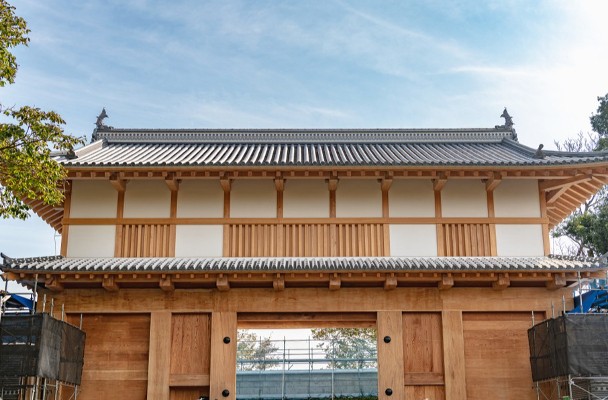
Comments